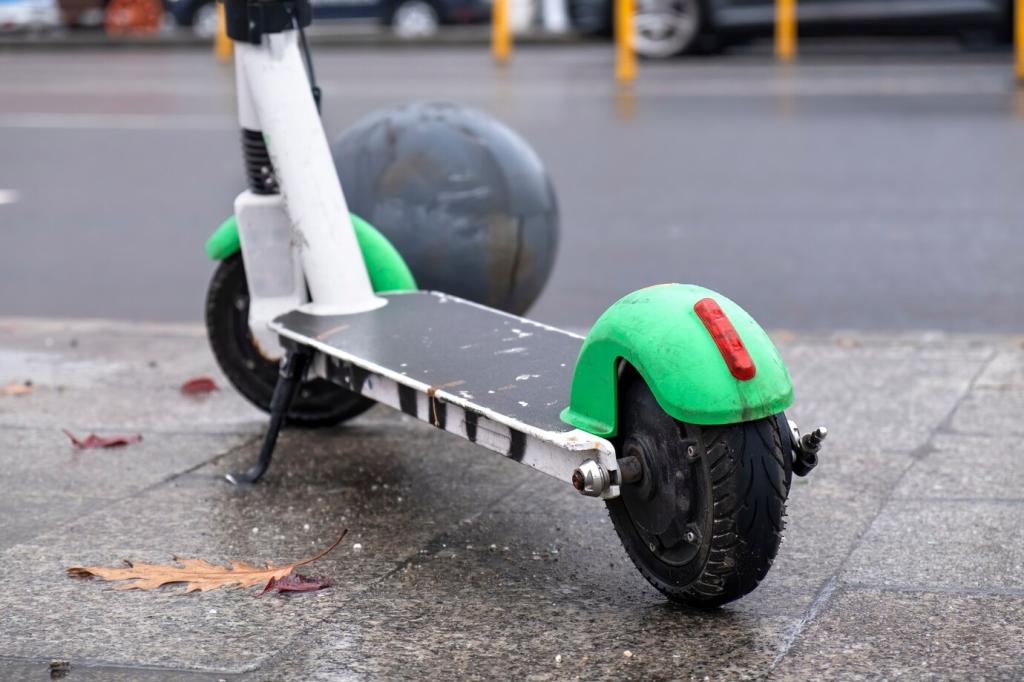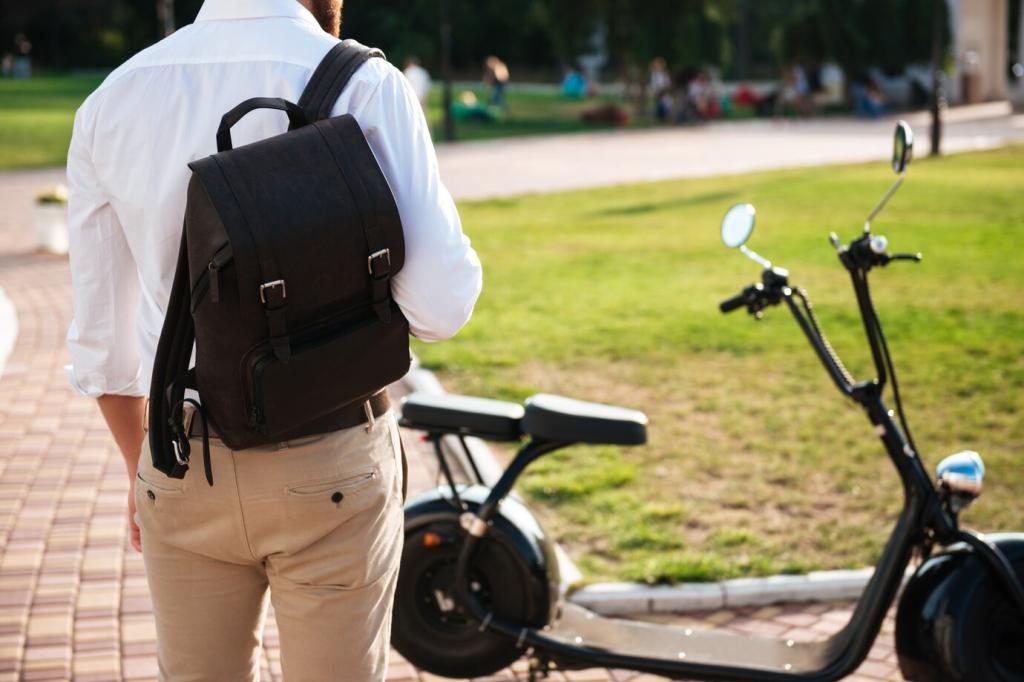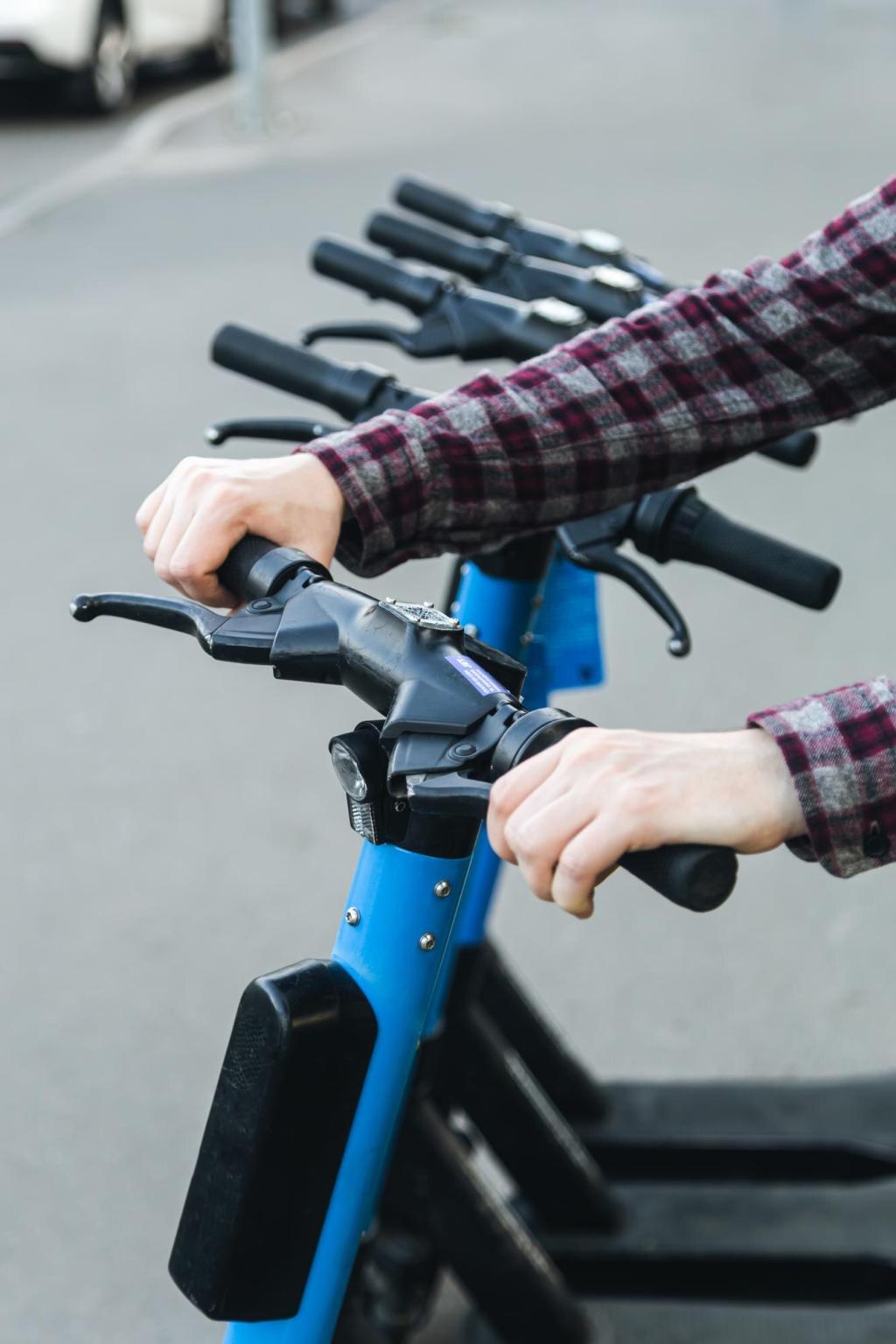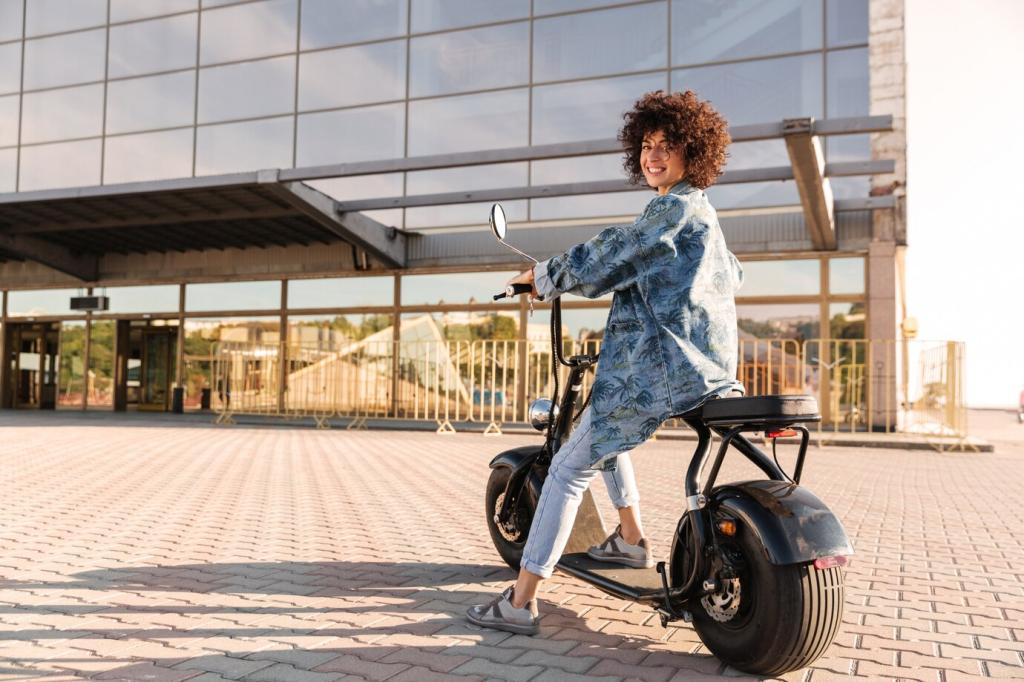
Chosen Theme: Advancements in Electric Scooter Battery Technology
Welcome! Today we dive into Advancements in Electric Scooter Battery Technology, exploring how chemistry, software, and design are reshaping everyday rides. Expect practical insights, human stories, and forward-looking ideas. Share your questions, subscribe for updates, and tell us how batteries shape your scooter life.
From Lead-Acid to Solid-State: A Quiet Revolution

Early riders wrestled with bulky lead-acid packs, then celebrated lithium-ion’s leap in energy density and lifespan. Now, solid-state prototypes promise safer, denser cells. If you felt your scooter getting lighter, quicker, and calmer each year, you’ve ridden this timeline personally.
Battery Chemistries That Power the Ride
LFP: dependable daily miles with cool-headed safety
Lithium iron phosphate packs trade a bit of energy density for excellent thermal stability and long cycle life. That means predictable range over years, calm behavior under stress, and fewer worries about heat. Daily commuters often prefer LFP for its steady, trustworthy temperament.
NMC and NCA: compact energy, careful control required
Nickel-rich chemistries pack more watt-hours into smaller spaces, delivering punchy acceleration and longer range in sleek decks. They reward careful thermal design and thoughtful charging habits. When paired with robust management systems, they offer thrilling performance without sacrificing long-term reliability.
Sodium-ion on the horizon and why it matters
Sodium-ion promises affordability, robust cold-weather performance, and supply-chain flexibility by avoiding scarce metals. While energy density trails premium lithium chemistries, urban riders may welcome durable, budget-friendly packs. Curious? Subscribe to follow real-world scooter pilots and early fleet trials as data arrives.


Smart Battery Management: The Invisible Co‑Pilot
Tiny differences between cells can grow into big problems without balancing. A good BMS equalizes cell voltages, protects against overcharge, and defends against deep discharge. The payoff is smoother power delivery and years of consistent capacity, not just a strong first summer.
Smart Battery Management: The Invisible Co‑Pilot
Heat builds fast during climbs and sprints. Smart systems throttle output gently, monitor temperature sensors, and guide cooling strategies. You feel fewer performance cliffs and more graceful curves. Share your city: where does your scooter get hottest, and what helps manage it?

Fast charging without fast degradation
High C-rate charging is tempting, but chemistry sets limits. The best strategies pair moderate fast-charging with intelligent preheating, conservative voltage ceilings, and adaptive tapering. You still get quick turnarounds while guarding cycle life. What’s your ideal trade-off between speed and longevity?

Swap stations as everyday infrastructure
Swappable packs shrink downtime for delivery riders and busy commuters. Stations authenticate batteries, check health, and match charged units instantly. When done right, line times drop and uptime soars. If your city hosts swap hubs, tell us how they’ve changed your planning and freedom.
Layers of protection that quietly do their job
Quality packs include current fuses, pressure-relief features, flame-retardant separators, and robust enclosures. Potting compounds and gaskets block moisture and vibration. Combined with firmware limits, these layers turn unlikely incidents into non-events. When safety is invisible, rides become effortlessly confident.
The certifications that actually matter to riders
Look for UL or IEC certifications, UN 38.3 transport compliance, and honest IP ratings for dust and water ingress. Transparent documentation beats vague marketing claims. Ask brands for reports, and share your findings with the community to raise the bar for everyone.
Real‑world resilience in rain, potholes, and winter
A sealed, well-braced battery shrugs off puddles and curb hits. Cold-weather strategies include gentle preheating and conservative power limits to protect cells. Riders who log winter miles: what tricks keep your range predictable when temperatures dive and roads get rough?
Sustainability Beyond the Ride
Second‑life uses keep cells valuable longer
Retired packs still deliver useful capacity for stationary storage—balancing solar swings, backing up routers, or powering campsite fridges. Aggregated modules make microgrids steadier. Share your second-life project ideas; we’ll highlight clever builds and practical safety checklists in upcoming posts.
Recycling that recovers critical materials
Modern hydrometallurgical processes reclaim nickel, cobalt, lithium, and copper with rising efficiency. Better labeling and take-back programs make collection smoother. When riders demand responsible end-of-life paths, brands respond faster. Subscribe to follow new facilities, policies, and real recovery rates as they improve.
Designing for disassembly from day one
Screws instead of glue, standardized modules, and accessible diagnostics speed repair and recycling. These choices save costs later and cut waste today. If you’re choosing a scooter now, ask about repairability. Your questions push the industry toward smarter, longer-lived battery designs.



